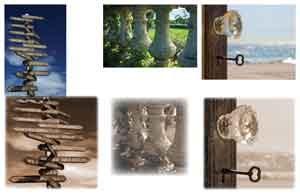“How did you find so many photos with exactly the same sepia tone?” This question was recently asked of my client Suzanne Fox, author of Grief Country: a meditation on the landscape of loss. The answer was, she didn’t. The images in the book were licensed from a range of photographer’s work on istockphoto.com and they were certainly not born with identical sepia tones.
Hence, this post about the role of the photo editor in a book project. I don’t mean photo editing software; I’m talking about a breathing, thinking, discerning human being with a feel for both the content and emotion of a photograph as well as the ability to see through the image as it is currently presented and imagine how it might be cropped, enhanced, toned or otherwise manipulated to achieve the effect she wants.
This is a job that used to have its own title among newspaper and publishing people. The photo editor’s job was to select the photos to be included in the newspaper, magazine, or book. It’s one of those old fashioned print production roles that has lost its title, but not its importance. [Google “photo editor” and all you’ll get is software; I had to add the phrase “select photos for publication” to find the link above.]
Suzanne spent hours online sifting through the vast offerings of istockphoto.com. She was able to imagine how they would all appear when they were toned to the same sepia value so she wasn’t distracted by original colors. She also had to envision the photos cropped to a square format and determine what part of the image was key to what she wanted to say. Here’s a sampling of before & afters:

For personal historians, there is a far smaller universe of possibilities. The photos available for your book are only what the family has in their own collection. [Or are they? More on that in a future post.] That does not lessen the importance of the writer/project manager/designer providing a photo editor’s direction and eye for the strong visual.
- Who are the key people mentioned in the story?
- What time periods or ages are important in the story?
- What locations figure prominently in the story?
- Are there papers or objects that can add meaning to the story? Naturalization papers, military medals, a rusty license plate from a well-loved car?
After the key photos and memorabilia have been selected, look through the remaining photos with both an aesthetic eye—some photos might be included just because they are so strong visually—as well as with the eyes of future generations. What might seem commonplace to people growing up in a certain era—the Roaring 20s, the 1960s—can provide a wonderful opportunity to add another layer to the story by including the image and a descriptive caption explaining what is going on in the picture.
Related posts you might like:
Book Thinking
Featured Book: Grief Country



2 Comments